
The Art of Participatory Community Building
What an abundant time of year! Everything seems to be dripping with ripe fruit and veg, and the trees are preparing to call-in the nourishment of the summers sun held in their leaves back into their trunk and roots, to get ready for winter. I’m spending a bit of time returning to my own nourishing learnings from the hot summer, recounting and recalling and asking where is this learning going next?
Back in July I was part of a gathering of 60+ individuals passionate about community-led change for The Art of Participatory Community Building, in Bristol. We gathered for 3 days of learning from a group of talented local and international facilitators, sharing tools and practices to bring into our work in communities. Alongside this we had the chance to connect and reconnect with people from across the South West, tell stories of change, hope and challenge; to play, create and teach one another – and share food together.
Personal Harvest
Seasons of change and abundance:
- Winter – Rest, reflect and renew
- Spring – plan, prepare, sow, invite, bring together
- Summer – work the field, tend, engage, act
- Autumn – harvest, choose new seeds
So, here we are in the Autumn harvest – where we feast on, and process the fruits, and choose the seeds we want to grow next Spring. I have put together some of my key learnings and reflections from the 3-day community building event. We covered a vast array of tools and practices, too many to name and do justice to here, so here are just a few highlights.
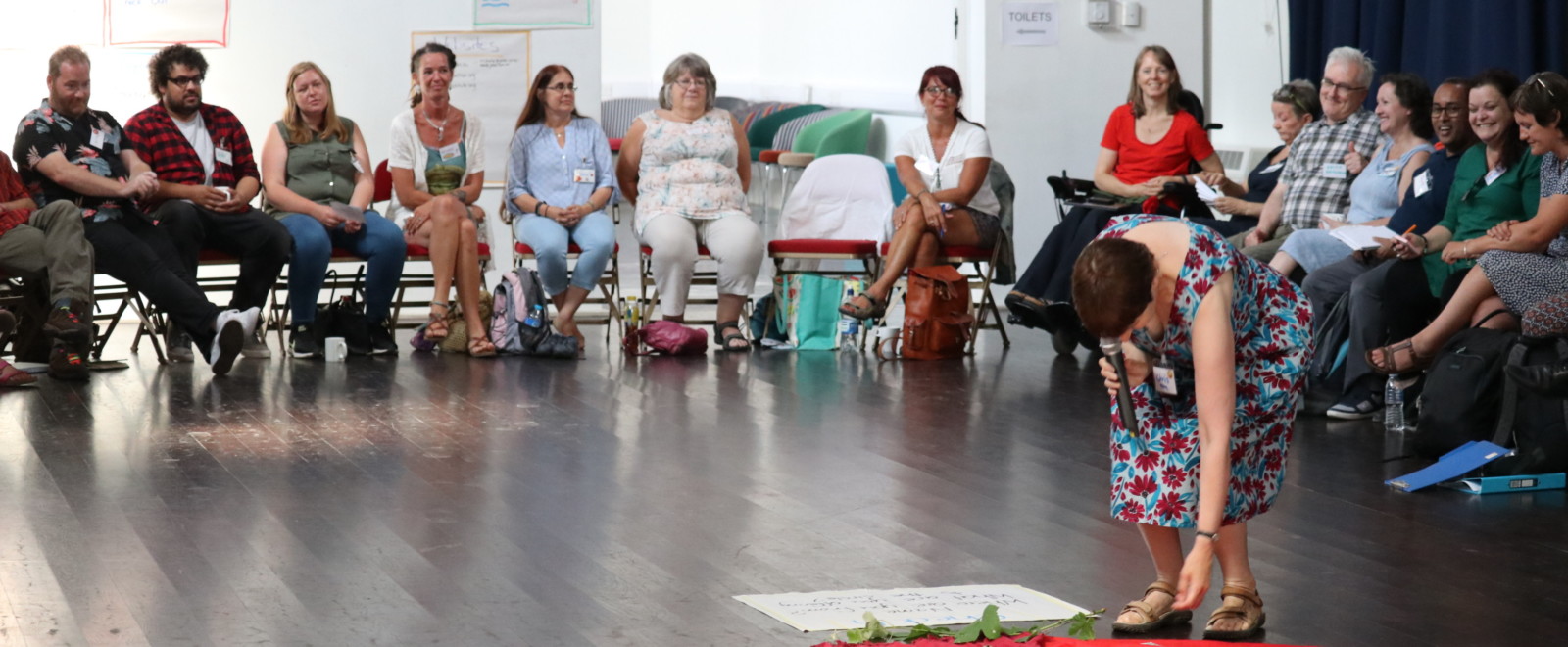
We began in a circle. In the centre was a a gathering of curious objects – we had each been invited to bring something of ourselves into the room that we wanted to share – poems, pictures, momentos, symbols. A circle is symbolic and creates an equalising space, and with this we brought our whole selves into the room.
Opening and closing with the circle, or ‘check in and check out’, was a daily ritual and helped us all step into the space and be present together, as a whole. Each day someone brought their own practice to the group – yoga, breath work, voice, games.
The circle always started with clear intentions for the day. Invitation was also key – who was there holding the space and why? What was interesting was I found myself feeling just as responsible for ‘holding of the space’ as the core team. We were all welcome to help maintain harmony of the space – this was shared.
Storytelling played a big part in circle life, and people offered up their own practice in their work as a community builder or as a resident in their own community. If a particular challenge or question arose from this that needed to draw on the strengths in the room it was parked ready to start up again in an ‘Open Space’ discussion (more on this in a minute).
Three guiding practices for circle life:
- Speak with intention: note what has relevance to the conversation in the moment
- Listen with attention: respect the learning process for all members of the group
- Tend to the well-being of the circle: remain aware of the impact of our contributions
This collective sense of responsibility, as well as taking on lead roles for sessions or activities, created a culture of ownership – this is ours and anything is possible.
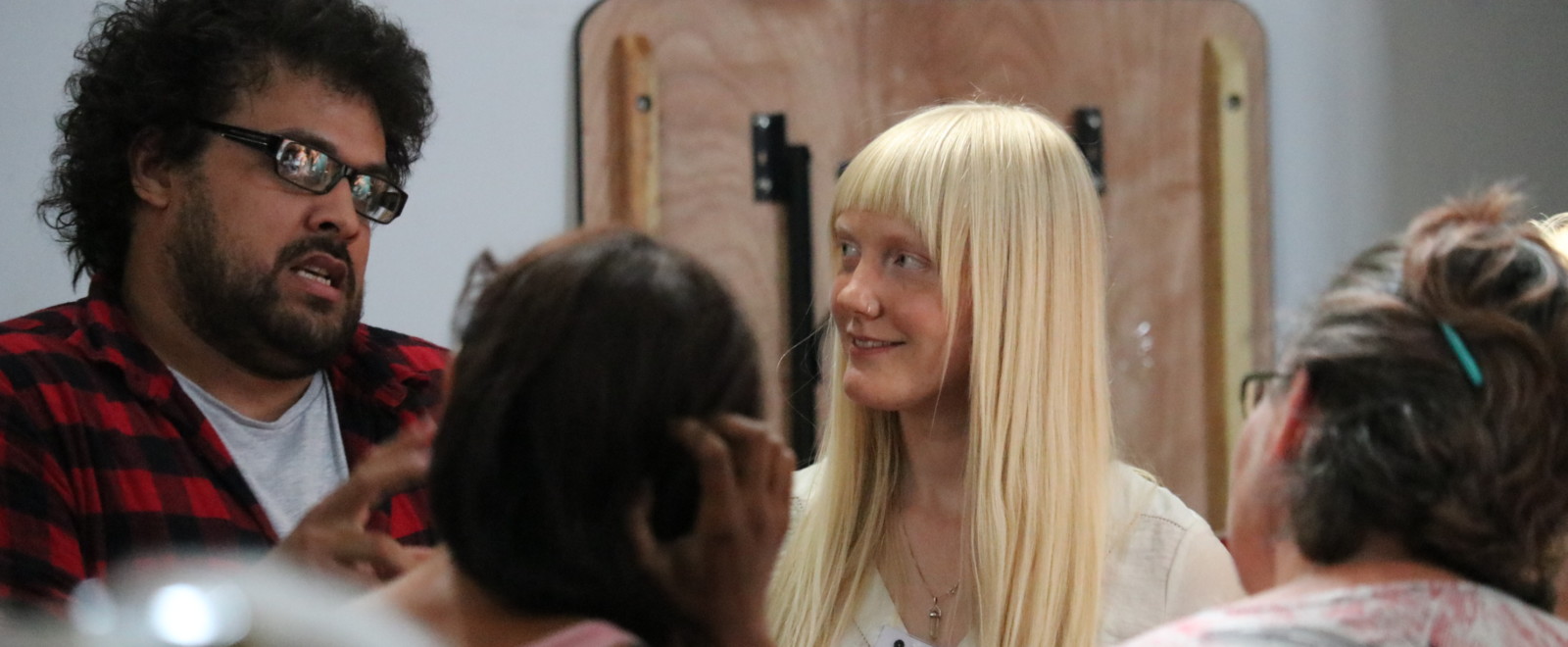
The Breathwork of Change
We learned about how change exists in the inbreath and the outbreath. In the inbreath – learning and discovery, in the outbreath – clarity, purpose and action. Breathwork of Change describes the ebb and flow of change. Different steps (or breaths) range from ‘divergence’ when a ‘caller’ asks a question or poses a challenge, through to ‘convergence’ when others have been brought along with the process of change and are purposeful, clear and motivated to act. Here are the 6 ‘breaths’ or stages of change:
Call – Name the issue or core question
Clarify – Make no assumptions, gain understanding of purpose together
Invite – Who else could we invite to the conversation?
Meet – Host the conversation, allow wisdom to emerge
Act – Take purposeful, meaningful, collective action
Holding the Whole – Continue to check in and return to purpose
We also talked about the middle stage between divergence and convergence when there is an inevitable ‘groan zone’ when things feel murky and uncertain. Understanding this ‘groan zone’, and not feeling fearful of it, was a significant learning. In this zone the most powerful conversations can exist, even though it sometimes feels uncomfortable. If we can learn to sit in that uncomfortable space together and not pass judgement too soon, shared learning can emerge.
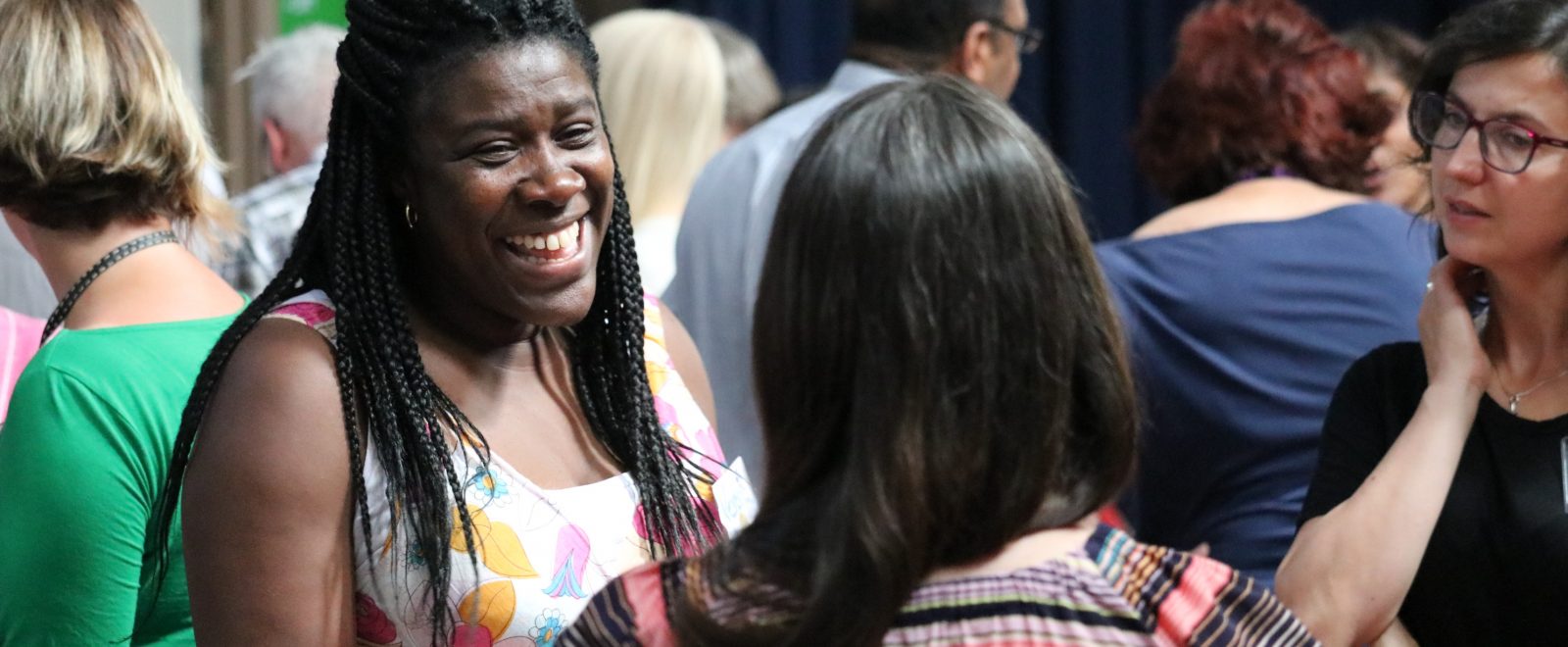
Compassionate Conversations
I was particularly interested to learn more about Compassionate Conversations or Non-Violent Communication (NVC). In its essence, it is about how we can have ‘conversations that make life more wonderful for everyone involved’ (Marshall Rosenburg – a founder of NVC). It helps you decipher what is important to you, take ownership over your own feelings and pinpoint what you really need. It brings your attention to the present, away from historic events, and allows you to connect with yourself to be ready to hear others.
The NVC process:
- Observe behaviour you see happening
- Observe your own feelings
- Think: “I need…”
- Make your request
We spent 10 minutes being completely listened to, and then listening to someone else with the question: ‘When have you felt really listened to?’ To begin with 10 minutes seemed like a lifetime, but then I began to settle into this sensation of being totally heard – it was such a moving experience. I finished feeling empowered and with a clearness of vision. I had been allowed to discover my own innate wisdom and internal resource.
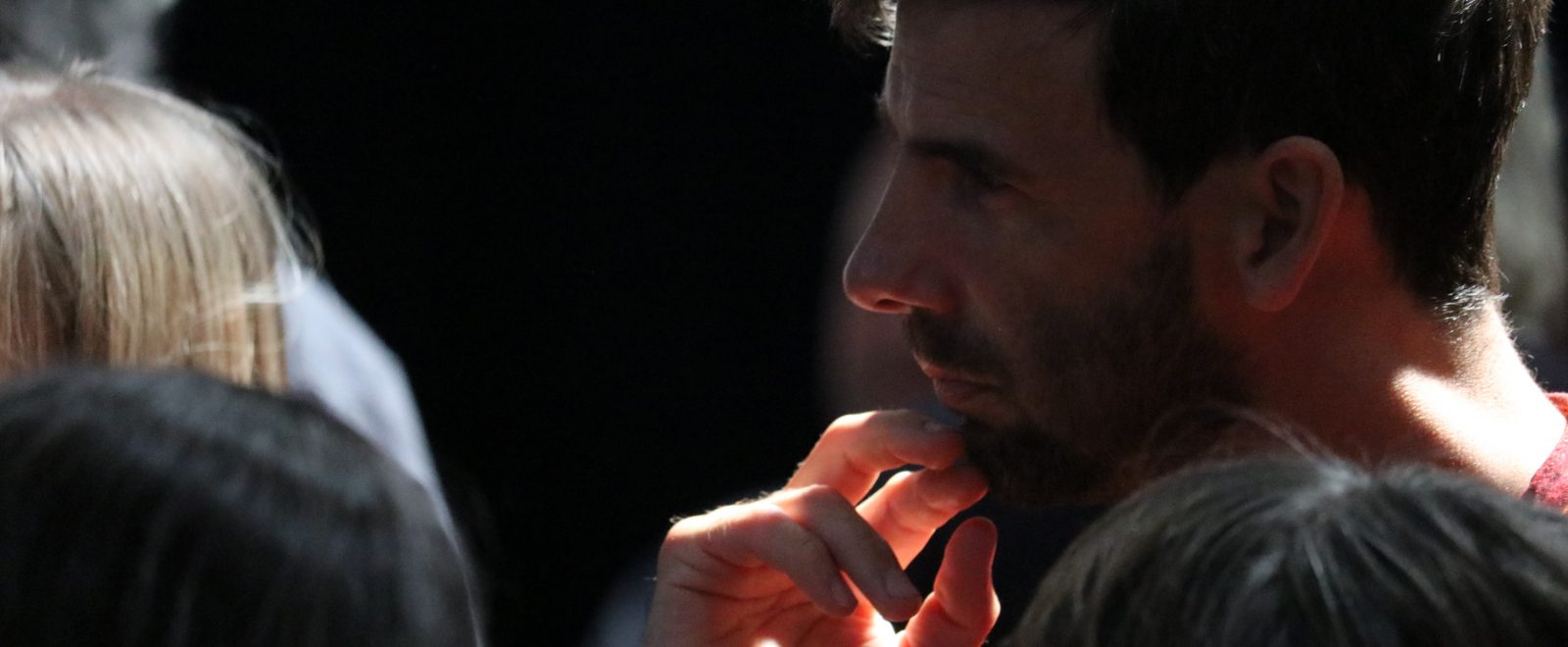
Neighbourliness
We explored the difference between volunteering and just doing your thing because you love it. Doing what you love fulfils your needs to be part of your local community and enables you to give. One of our facilitators, Martin Simon, talked about the importance of giving as ‘an exchange of home’, a place of belonging for both parties. In contrast, volunteering can sometimes feel unbalanced and unequal, as it often comes from a place of ‘helping someone else’ due to seeing a need or deficit in the other.
He shared the importance of ‘neighbourliness’ where people give and take fairly and recognise and invest in each-other: “Neighbourliness is the key so we must invest in the inventiveness of people to preserve it for themselves. It operates through three principles, ‘give and take’, ‘live and let live’ and ‘speaking out for fairness’. Without neighbourliness we will become a second-rate society and it can be argued that democracy itself could be at risk.” (Martin Simon)
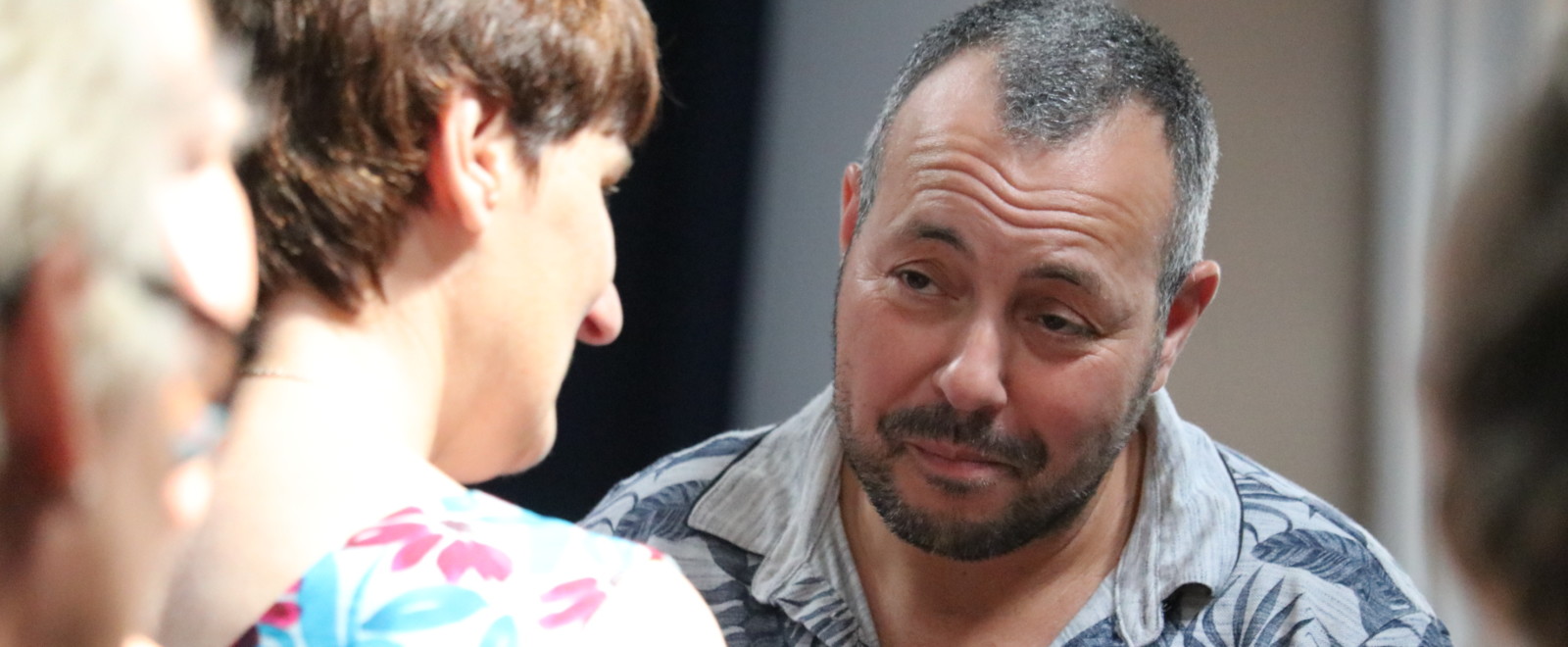
HOPE and Appreciating Each Other
The principles of ‘Appreciative Inquiry’ echoed our earlier conversations about enabling people to give. The key principles are as follows:
- In every society, organisation or group, something works
- What we focus on becomes our reality – communities grow from what they personally ask questions about
- People have more confidence and comfort to journey to the future (the unknown) when they carry forward parts of the past (the known)
- If we carry parts of the past forward, they should be what is best about the past
- It is important to value differences
- The language we use creates our reality
This creates HOPE (Helping Other Possibilities Emerge). This does not mean denying or ignoring the challenges, however – it is all about asking the right question.
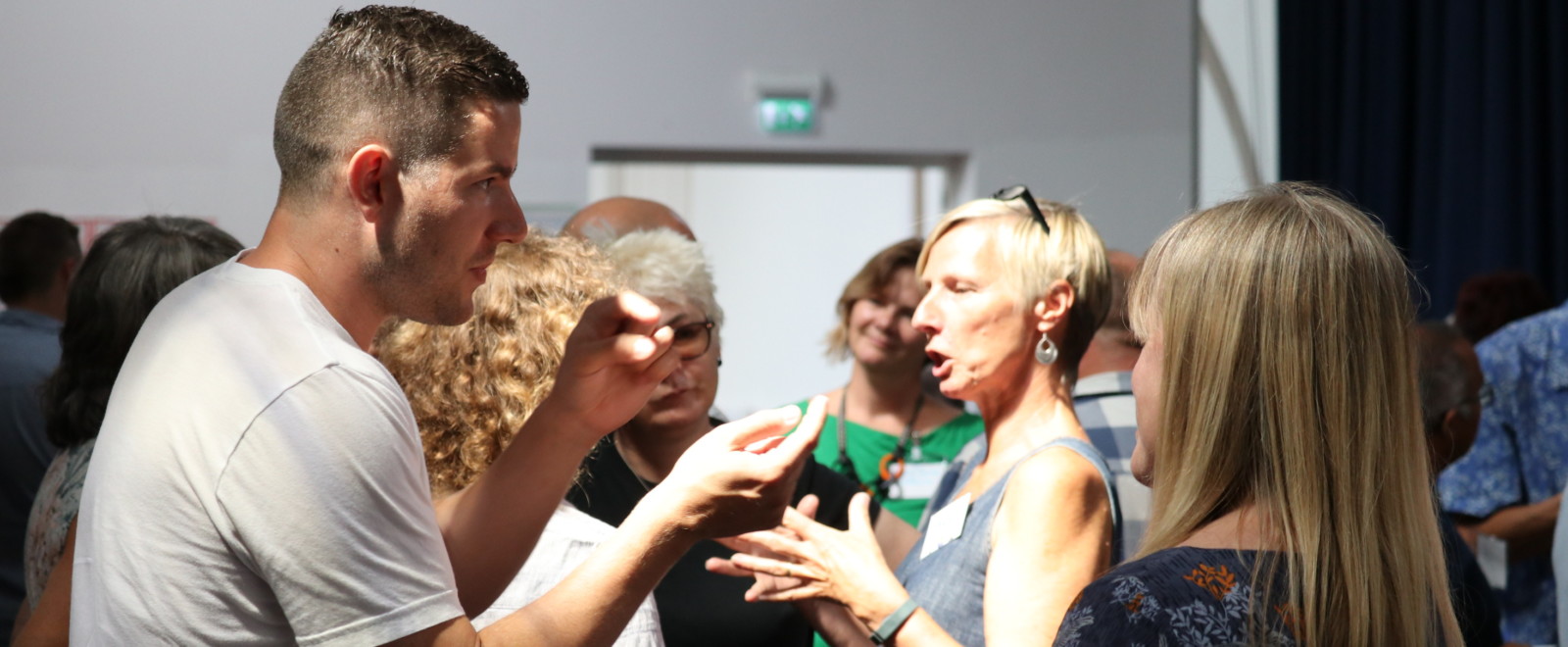
The power of questions
“The first people had questions and they were free. The second people had answers and they became enslaved.” (Wind Eagle American Indian Chief)
- Generate Curiosity
- Thought Provoking
- Stimulates Conversation
- Focuses Enquiry
Tracey from the Torbay Community Development Trust shared the ABCD framework of Learning Conversations, based on the work of Mike Green and Henry Moore, authors of ‘ABCD in Action: When People Care Enough to Act’.
The learning conversation helps develop a group’s motivation to ask. It helps them reframe what they don’t want to a place of possibility – where they are able to take ownership and change the outcome. The framework is usually held over 3 rounds of discussions:
- CONCERNS – Share your concerns, and very specifically here, What DON’T you want to happen?
- DREAMS – Share your dreams – what is your preferred future vision?
- SKILLS & ABILITIES – Step up and share your skills and abilities, discover what you truly care about enough to act on, encourage and build on your motivation to act.
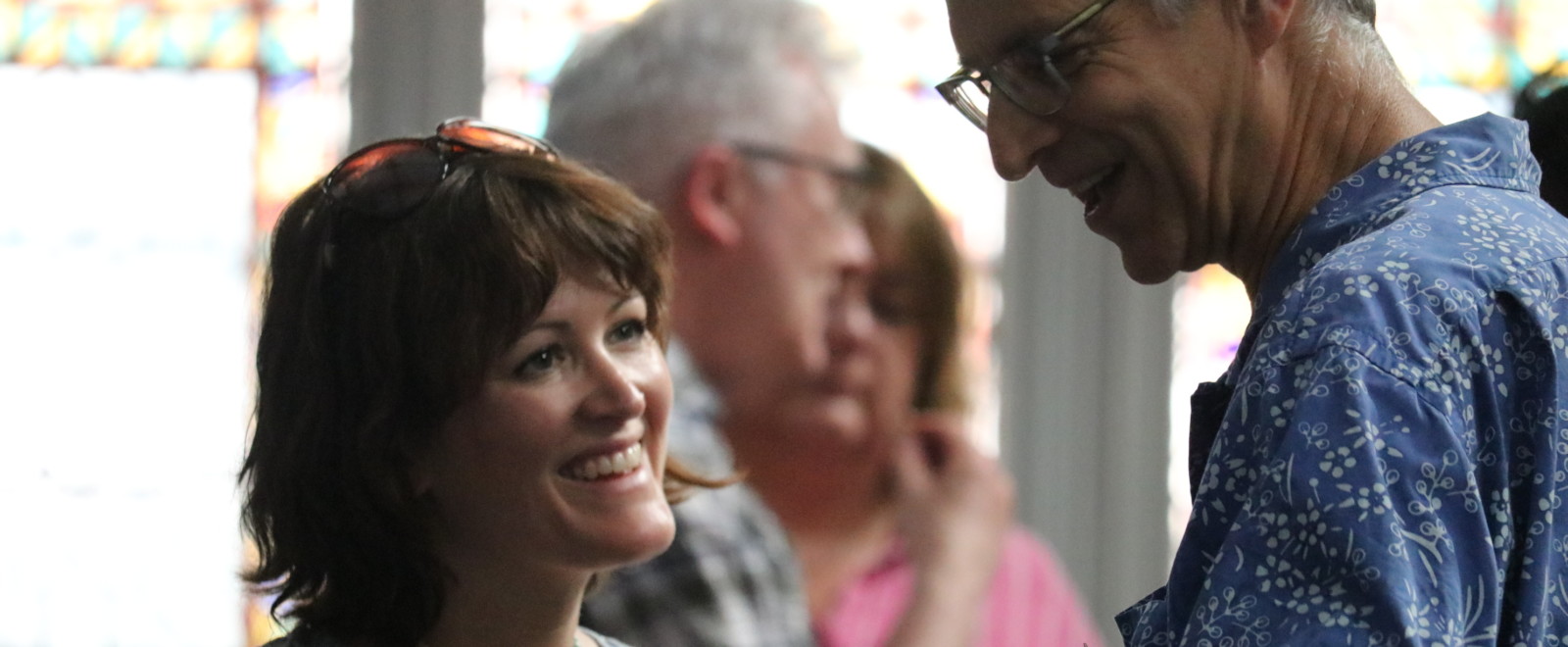
Open Space
A revolutionary idea – Open Space starts with the notion that the right people are already in the room. Whoever is present has all the necessary skills to tackle the challenge in front of them, they just need a way of sharing them together. So, it is an opportunity for people to bring themselves into the space, ask the right question and see what emerges together!
Many topics were covered during our Open Space: From swapping stories of community building practice, learning different ways to reflect, discussing how ABCD can be brought into traditional workplaces, through to considering how equality in ABCD and community building plays out, to how to use creative methods to start conversations and how to use your voice to its full potential. It was rich pickings.
What was inspiring was seeing so many people step up and give – a testimony to the culture of the 3-day event. This is ours, we are infinite – the possibilities to learn from one another are endless.
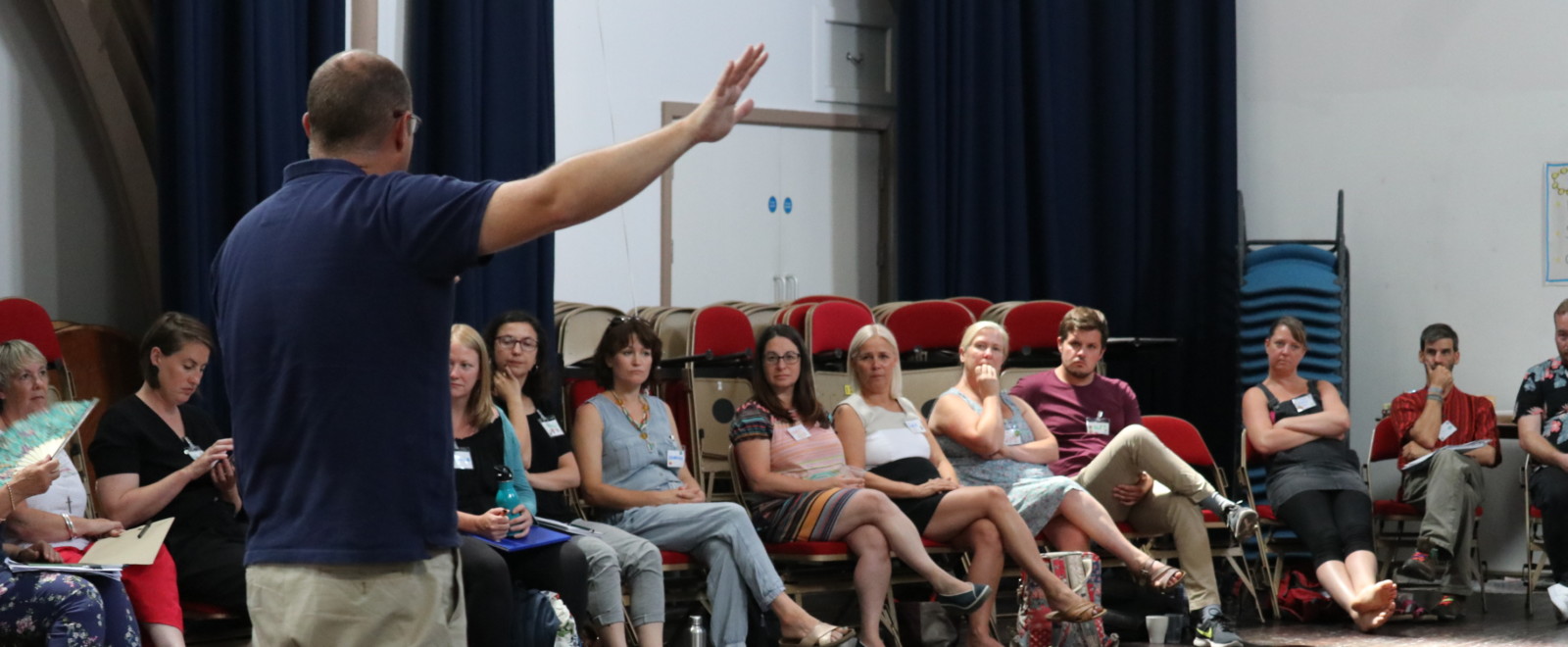
So I’ve touched on just a handful of the tools and practices that came out of the 3-day ‘Art of Participatory Community Building’ event. It is quite a harvest.
Along with this abundance, I am also grateful for the lasting connections I made around the South West through this event. What a creative collective of humans to know and learn from. Let’s keep the conversation going about what is working well – it will help us grow and, in turn, it will enable further authentic conversations to take place in the communities where we live and work.
(Appendix /links)
Some of the organisations involved in the Art of Participatory Community Building event:
The Jeder Institute is a not-for-profit collective of approximately 30 members, based mainly in Australia. They are an innovative, international, strengths-focused organisation with extensive experience in creating collective action throughout the world.
Torbay Community Development Trust was established following discussions with over 100 voluntary sector representatives, Torbay CDT was formed with the intention of making Torbay a place where all people feel included. The Trust empowers communities, building on strengths and skills through Asset-Based Community Development.
Bristol City Council has been using an Asset-Based Community Development approach for the past four years. The team works across the city in disadvantaged neighbourhoods to support citizens to take action on the things they care about and to encourage organisations to work together in a similar way to build more resilient communities.
The Barnwood Trust work together with the people of Gloucestershire to bring the county closer together. The Trust has been practicing ABCD since 2011.